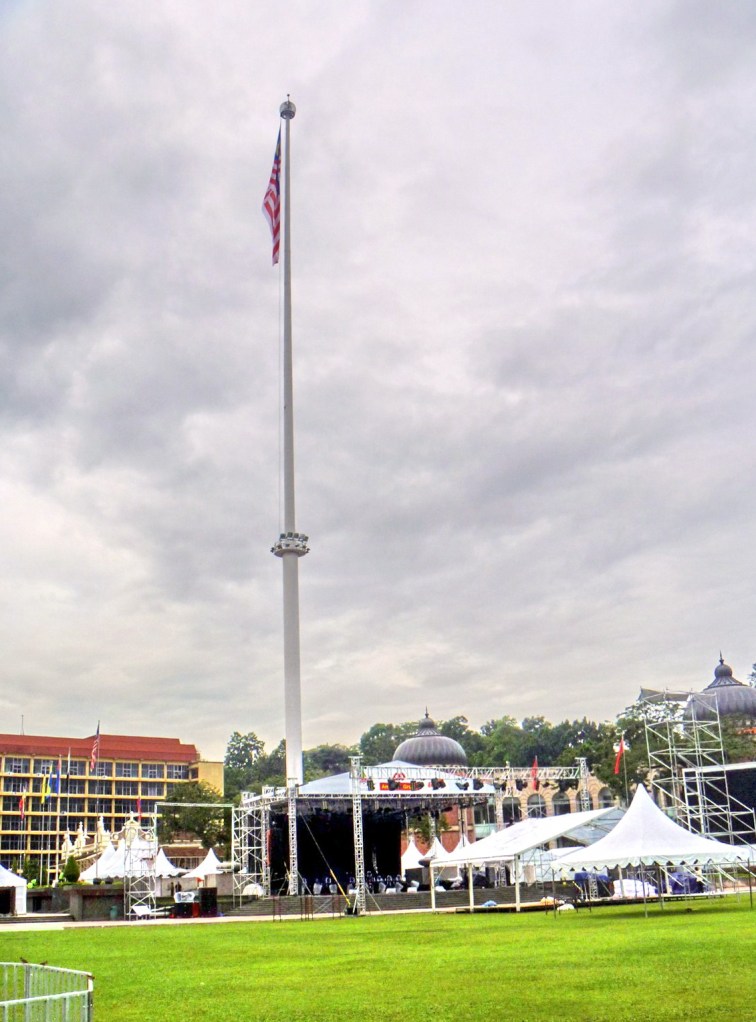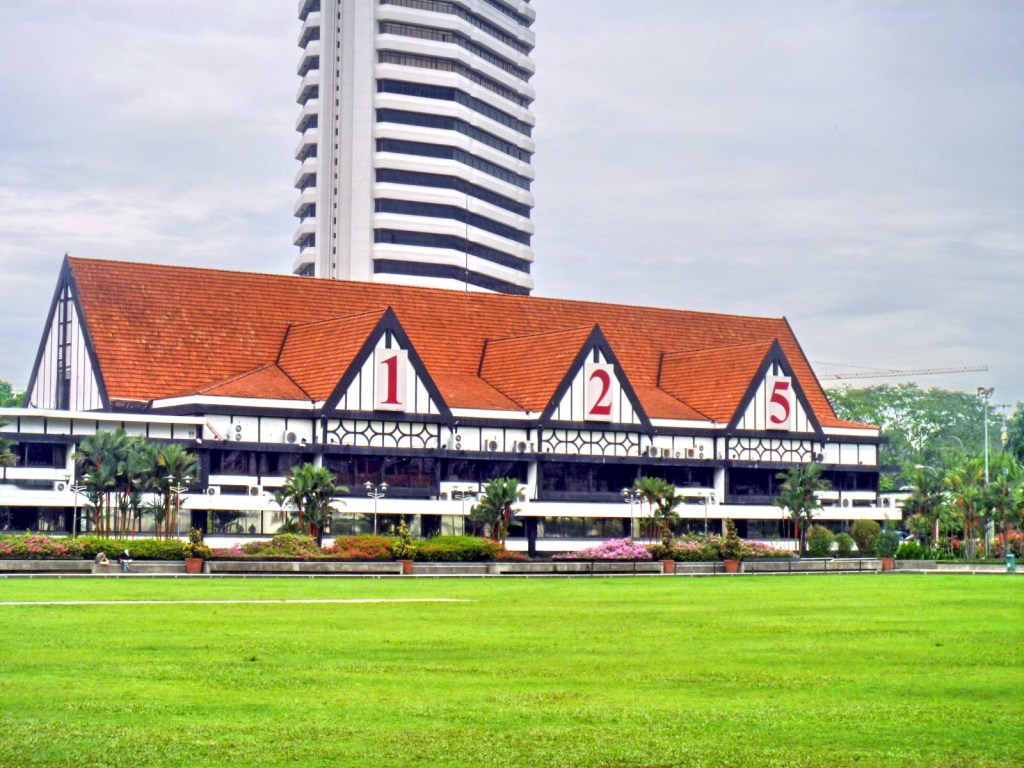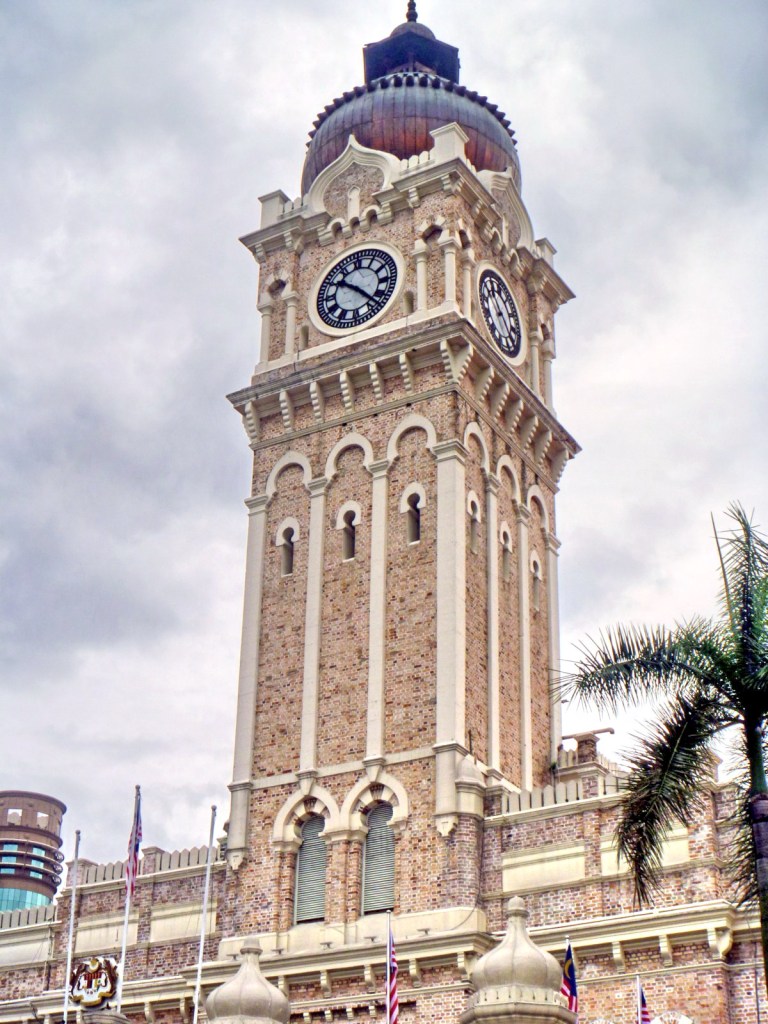After the video documentary presentation on the life of Dr. Pio Valenzuela, I requested museum curator Mr. Jonathan C. Balsamo for a tour of the city’s historical sites using their open pickup. Sandy, Mark, Ronnie and Violeta joined us. Jandy and Violeta stayed inside the pickup’s airconditioned cabin while Mark, Sandy, Jonathan, Ronnie and I rode on the open cargo area as we traversed the city’s very narrow streets exposed to the hot, late morning sun.
Our first stopover was at Arkong Bato (Spanish for “stone arch”), along the only road that links MacArthur Highway with the North Luzon Expressway (NLEX). This arch was built in 1910 along the old national road passing through the old town of Polo before the construction of MacArthur Highway. It formerly marked the boundary of Rizal (where Malabon formerly belonged) and Bulacan (where Polo formerly belonged). Today, it marks the boundary between Brgy. Santulan (Malabon City) and Brgy. Arkong Bato (Valenzuela City).
| San Gabriel House |
| The former Valenzuela City Emergency Hospital |
We next proceeded to the old town proper and made a stopover at Liwasang Rizal, the old town plaza with its own simplified replica of the Rizal Monument (its base somewhat shorter because the plaza’s grounds were elevated through the years). Surrounding it are the old town hall (now home to the former Valenzuela City Emergency Hospital), the San Diego De Alcala Church and the old but still wonderfully preserved, 2-storey San Gabriel house (now home to Aida Carinderia). The latter has capiz sliding windows, intricate woodwork and double roofs typical of houses built during the Spanish and American eras. This house should be added to the list of the city’s tourist attractions.
| Church of San Diego Alcala Ruins |
Beside the church are the ruins of the oldest church in Valenzuela, built by Fr. Juan Taranco and Don Juan Monsod and later expanded and completed by Fr. Jose Valencia, aided by Capt. Juan Tibay, in 1632. In 1852, the church was fully repaired and remodelled by Fr. Vicente but was razed to the ground during World War II. Only the octagonal bell tower and the arched main entrance have been preserved.
| Gabaldon-style building of Pio Valenzuela Elementary School |
From the church, we also walked to the nearby American-era, Gabaldon (named after Assemblyman Isauro Gabaldon of Nueva Ecija, author of Act No. 1801, better known as the Gabaldon Act)-style schoolhouse of Pio Valenzuela Elementary School, one of a number of heritage schoolhouses, built in the Philippines between 1907 and 1946, that follow standard plans designed by American Arch. William Parsons.
| Church of San Roque |
Back to our pickup, we next proceeded to the San Roque Church which dates to 1763. The church facade has a semicircular arched main entrance flanked by statue niches and twin bell towers with pyramidal roofs. The wall above the triangular pediment as well as the wings on the sides of the church are probably modern additions. Our last destination in our city tour was the 2-storey Pio Valenzuela House. The original house was, together with its antique furniture, razed during World War II.
| Dr. Pio Valezuela House |
The marker in front of the house erroneously identifies it as the birthplace of Dr. Pio. He was actually born in Brgy. Tagalag, its actual location already unknown even to his relatives. This house was where Dr. Pio lived and died. Only a caretaker lives here. The grounds of the house were partly flooded, a result of it being situated on one of the lowest parts of the city. Valenzuela City is located on swampy land crisscrossed by rivers.
| Historical Marker |
Arkong Bato: Brgy. Arkong Bato
San Roque Church: Brgy. Mabolo
Pio Valenzuela House: Velilla St., Brgy. Pariancillo Villa













